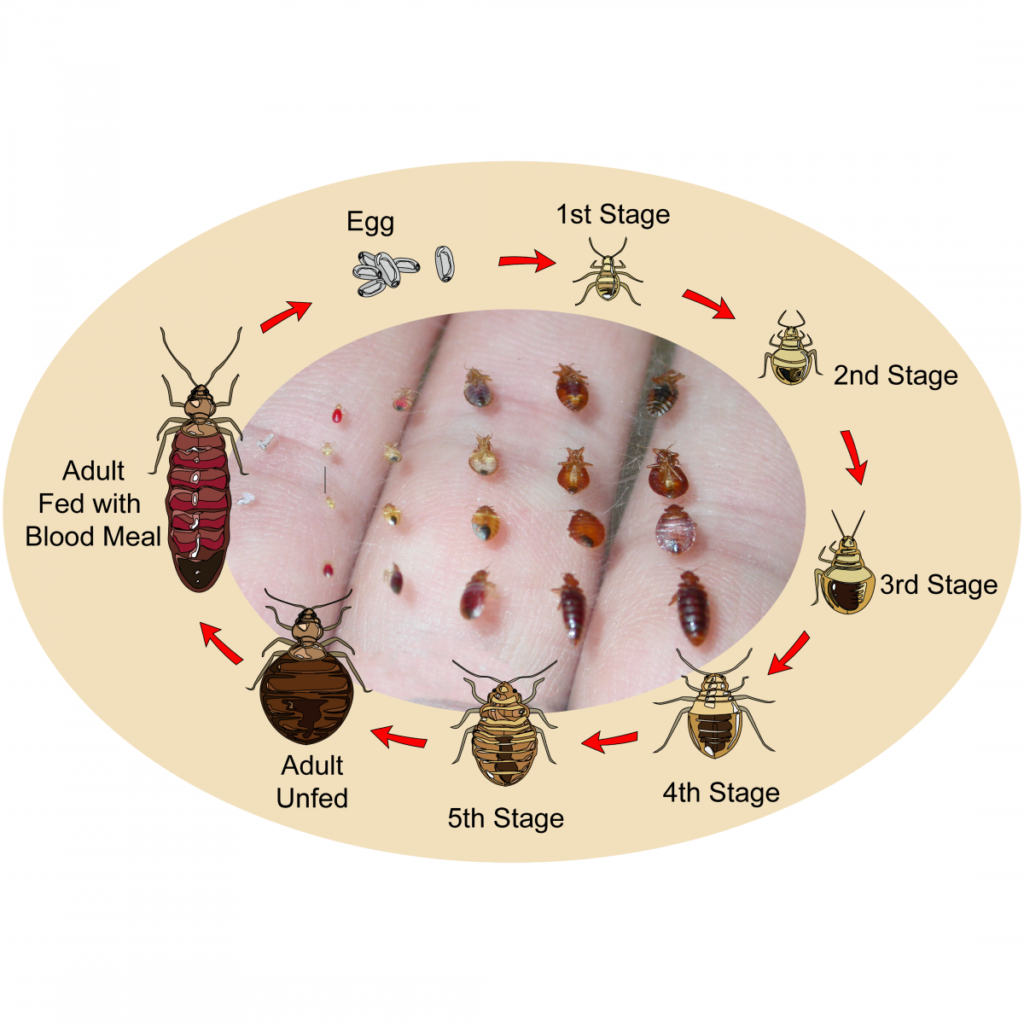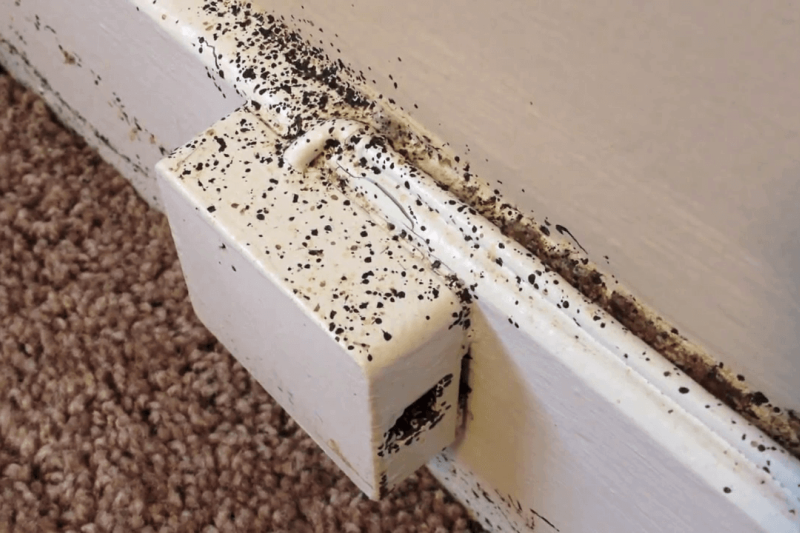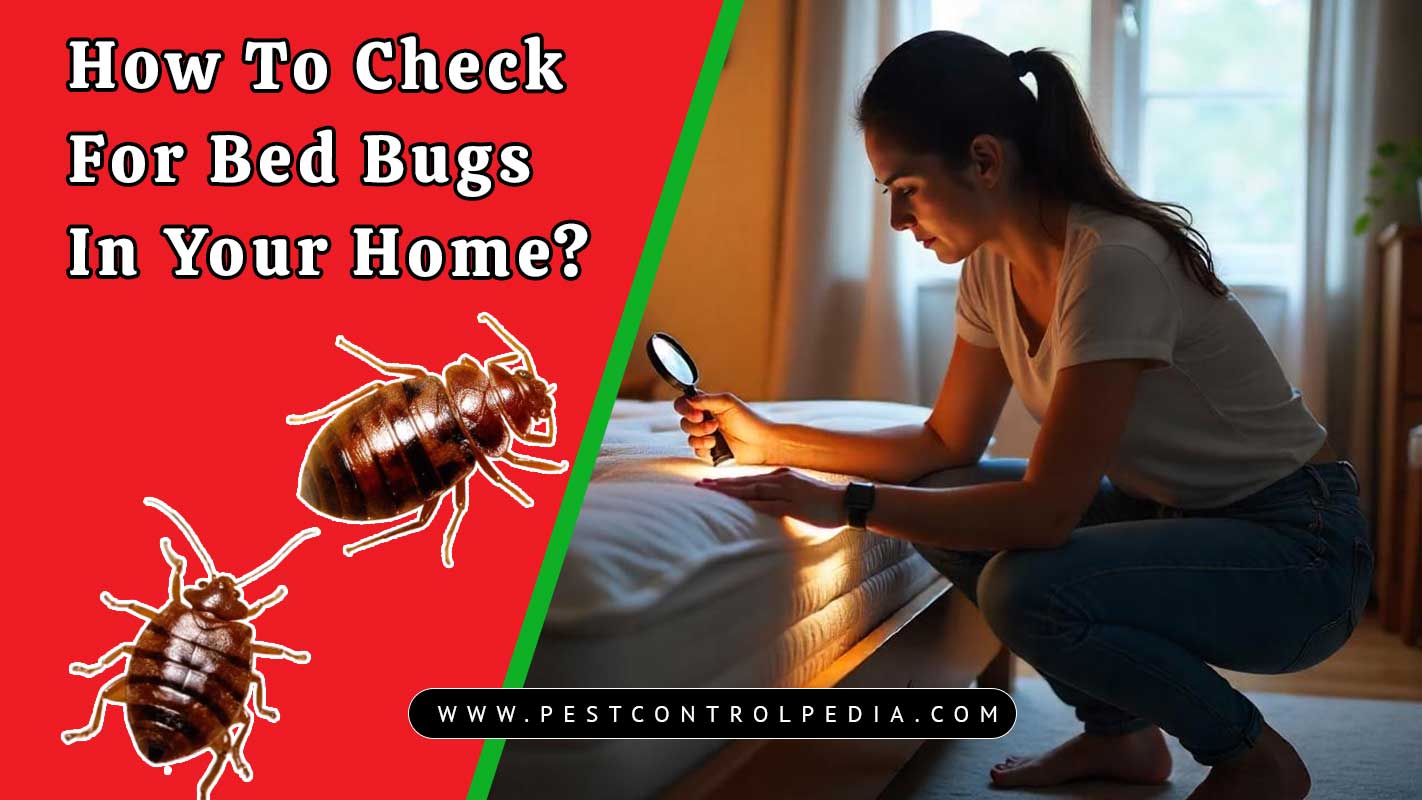Ask a question to yourself: How can i tell if i have bed bugs inside my house? Bed bugs are tiny, elusive pests that can turn your peaceful nights into itchy nightmares. Identifying an infestation early is crucial to prevent it from escalating.
This guide will provide you with a comprehensive approach to answer the important question: How To Check For Bed Bugs in Your House? By understanding their habits and knowing where to look, you can effectively detect these unwanted guests.
Bed bugs can hide in spaces as thin as a credit card, so be thorough and patient during your inspection.
Table of Contents
ToggleThe Growing Concern of Bed Bugs and the Importance of Early Detection
Bed bugs have become a global concern. Their increase in recent years is mainly due to more international travel and the movement of used furniture. This means we need to be more aware and take steps to prevent them in different places.
Finding bed bugs early is very important to get rid of them. If you wait too long, they can multiply quickly. Female bed bugs are dangerous as they can lay many eggs. A small problem can become a big one in just weeks if you don't do anything.
Dealing with bed bugs early has many benefits. It usually means you can use easier treatment methods. Taking care of a small problem before it gets big can save you time and money. For businesses like hotels, finding bed bugs early helps keep their reputation good. Also, acting fast can reduce the stress that comes with having bed bugs.
Understanding Bed Bug Biology and Behavior
To effectively check for bed bugs in your house, it is necessasry to understand the biology and behaviour of bed bugs so that it helps to know about them. This includes what they look like and how they act.
- Adult bed bugs:
Adult bed bugs are small, about the size of an apple seed, and reddish-brown. They are flat if they haven't eaten recently. After feeding, they become longer and more balloon-like, and their color might be more red-brown. They have six legs, two antennae, and no wings.
- Young bed bugs:
Young bed bugs, called nymphs, look like smaller, clear, whitish-yellow versions of adults. If they've just eaten, they might look reddish. They go through five stages and need to eat blood to grow.
- Bed bug eggs:
Bed bug eggs are tiny, white, and shaped like rice grains. They can be found alone or in groups, stuck to surfaces in cracks.
- Feeding:
Bed bugs only eat blood from people and warm-blooded animals. They prefer human blood but will also feed on pets. They are mostly active at night when people are sleeping. However, if they are hungry, they might come out during the day.
Feeding can take a few minutes. Adult bed bugs usually feed every few days. When they bite, they inject something to stop blood from clotting and something to numb the area so you don't feel it right away. One bed bug might bite several times to find a blood vessel, which can lead to a pattern of bites on your skin.
- Behaviour:
Bed bugs like to hide in groups in cracks and crevices near where people sleep. They don't build nests like ants. They usually stay within a few feet of their food source. Their flat bodies let them squeeze into very small spaces. Common hiding spots are in mattress seams, bed frames, headboards, box springs, and furniture cracks.
- Life Cycle:
The life cycle of a bed bug includes eggs, five nymph stages, and adulthood. They need blood to grow and for females to lay eggs. If it's warm and there's food, they can complete their life cycle in about a month.
Female bed bugs can lay a few eggs each day, totaling hundreds in their lifetime, which can be up to a year or more. Bed bugs can live for a long time without eating, especially in cooler temperatures. However, they die if their body temperature gets too high.
- Surviving Skills:
Bed bugs are good at surviving, which makes them hard to get rid of. They can live a long time without food, reproduce quickly, and hide in tiny spaces. This means you need to check carefully and use thorough methods to deal with them.
They prefer to feed on humans at night, so checking sleeping areas is important, but you should also check during the day because hungry bed bugs might feed anytime.

Where to Look for Bed Bugs?
Bed bugs are excellent hiders, so a thorough inspection is key. Focus on areas where people sleep and nearby furniture.
1. The Bed (Most Common Hiding Spots):
- Mattress: Pay close attention to the seams, tufts, and piping. Lift the edges and examine both the top and bottom surfaces. Check for live bugs, dark spots of fecal matter (looking like marker dots), reddish or rusty blood stains, and pale yellow shed skins (cast exoskeletons) or eggs. Don't forget to check under any handles or labels.
- Box Spring: Inspect the fabric covering, especially along the seams and staples. Look underneath the dust cover (the thin fabric on the bottom) and inside any crevices or holes in the wooden frame.
- Bed Frame & Headboard/Footboard: Examine all joints, cracks, and crevices in the wood or metal frame. Pay attention to screw holes, corners, and any areas where parts connect. Check behind the headboard, as bed bugs often hide there.

2. Other Furniture Near the Bed:
- Nightstands & Dressers: Empty the drawers completely and inspect inside, along the runners, underneath, and in any cracks or crevices. Check the backs of these furniture pieces as well.
- Upholstered Furniture: Carefully inspect the seams, cushions (underneath and between them), armrests, and the underside of sofas and chairs.
3. Around the Room:
- Baseboards: Look along the edges where the baseboards meet the wall and carpet. Use a thin, flat object like a credit card to check behind loose sections.
- Curtains: Check the folds and seams, especially near the top where they attach to the rod.
- Walls: Inspect along wall junctions with the ceiling and floor. Look behind picture frames, mirrors, and any other items hanging on the wall. Check for cracks in plaster or loose wallpaper.
- Electrical Outlets & Light Switches: Carefully check around the edges of the cover plates.
- Clutter: Bed bugs can hide in piles of clothes, books, and other items, especially near the bed.
4. Personal Belongings:
- Luggage & Bags: If you suspect you brought bed bugs home from travel, thoroughly inspect all seams, pockets, and folds of your luggage.
- Clothing & Bedding: Even if you don't see live bugs, washing and drying potentially infested items on high heat can kill them and their eggs.
- Secondhand Items: Always inspect used furniture, mattresses, and clothing carefully before bringing them into your home.
Also Read: What Attracts Bed Bugs to My Home?
How to Conduct the Bed Bugs Inspection
- Tools:
- Flashlight: A bright light is essential for spotting bed bugs and their signs in dark areas.
- Magnifying Glass: This can help you see eggs, shed skins, and fecal spots more clearly.
- Thin, Flat Object (e.g., credit card, putty knife): Use this to gently probe cracks and crevices to dislodge any hiding bed bugs or eggs.
- Plastic Bags or Containers: To collect any bed bugs or evidence you find.
- Sticky Tape: Can be used to lift and collect eggs or shed skins.
- Vacuum Cleaner with Crevice Tool: To vacuum up any visible bed bugs and their eggs (empty the vacuum bag immediately outside).
- Paper Towels or Cleaning Wipes: To clean surfaces and look for dark fecal spots.

- Methodical Approach: Start your inspection in the areas closest to where you sleep and systematically work your way outwards. Be patient and thorough, as bed bugs are small and can hide in tiny spaces.
- Look for Multiple Signs: Don't just rely on seeing live bugs. Look for a combination of signs like fecal spots, blood stains, shed skins, and eggs.
- Pay Attention to Odor: A heavy infestation may produce a sweet, musty odor.
Recognizing the Signs of a Bed Bug Infestation
Finding bed bugs means looking for the signs they leave behind. You can often see clues that show they are there.
- Rusty or reddish stains on sheets, mattresses, pillowcases, or walls. These are from crushed bed bugs that have recently fed on blood.
- Small, dark spots, like the size of a period. These are bed bug droppings. They might look like they bled into the fabric, like a marker. Bed bug droppings feel smooth because they are dried blood, while cockroach droppings are more grainy. If you wet the spot, bed bug droppings will turn red.
- Eggs and Eggshells: Tiny (about 1 mm), pale yellow eggs and the translucent white shells left behind after hatching.
- Shed Skins (Exoskeletons): The clear, pale yellow skins that young bed bugs shed as they grow are also a sign. These shed skins look like empty bed bug shells and can be found in mattress seams, behind headboards, and where walls meet the ceiling.
- Live bed bugs: Adult bed bugs are reddish-brown and about the size of an apple seed. Young bed bugs are smaller and clearer. If you disturb them, they might quickly run away to hide.

Besides these direct signs, other things can suggest bed bugs.
- Bed bug bites: These are usually itchy, red bumps on the skin. They often appear in clusters or a line, especially on exposed skin like the face, neck, arms, and hands. However, bites alone don't always mean bed bugs, as other insects can cause similar bites, and some people don't react to bed bug bites at all. A zigzag pattern of bites is often linked to bed bugs.
- A musty, sweetish odor: This smell can be noticeable if there are many bed bugs. It comes from glands on their bodies. However, you usually only smell this in severe cases, so it's not the best way to find them.
It's better to look for a combination of signs rather than just one thing like bites. Bites can be confusing, so finding physical evidence like stains, droppings, eggs, and shed skins is a stronger sign of bed bugs.
The smooth feel of bed bug droppings, unlike the grainy texture of cockroach droppings, can help tell them apart if both pests are present. Also, bed bug droppings are made of digested blood and will turn red when wet, which is another way to identify them.
How can i tell if i have bed bugs?
Bed bugs are tiny, reddish-brown insects that hide in cracks and crevices around your bed and come out at night to feed on blood. They are about the size of an apple seed and can be difficult to spot during the day.
Common Signs of Bed Bugs
Look for rusty or reddish stains on your sheets or mattress, which may be caused by bed bugs being crushed. Dark spots, which are bed bug excrement, can also appear and may bleed on fabric like a marker.
Physical Evidence
You might find small eggs, eggshells, or pale yellow skins that young bed bugs shed as they grow. Live bed bugs may also be visible, especially in mattress seams, bed frames, or nearby furniture.
Bite Marks
Bed bug bites are usually itchy, inflamed spots with a darker center. They often appear in clusters or lines on areas like the face, neck, arms, and hands, but some people may not react to bites at all.
Other Clues
An unpleasant, sweet, sickly scent in the room can be another indicator of bed bugs. Small blood spots on bedding and dark stains on mattresses are also common signs of an infestation.
What To Do If You Find Bed Bugs In Your House?
- Don't Panic: While finding bed bugs can be distressing, they are treatable.
- Isolate the Infested Area: If possible, prevent the spread to other rooms.
- Contact a Professional Pest Control Service: Bed bugs can be difficult to eradicate completely, and professional treatment is often necessary.
- Prepare for Treatment: Follow the pest control company's instructions, which may include washing bedding and clothing, decluttering, and vacuuming.
- Follow-Up: Even after treatment, continue to monitor for any signs of bed bugs.
By understanding what bed bugs look like, where they hide, and what signs to look for, you can become a skilled bed bug detector and take appropriate action if you suspect an infestation. Good luck with your investigation!
Myths and Facts About Bed Bugs
- Myth: Bed bugs are only found in dirty places.
Fact: Bed bugs can be found anywhere, regardless of cleanliness. - Myth: Bed bugs transmit diseases.
Fact: Bed bugs are not known to transmit diseases to humans. - Myth: You can get rid of bed bugs with DIY sprays alone.
Fact: DIY methods rarely eliminate infestations; professional help is often needed.
When to Call a Professional
If you are unsure about the extent of the infestation or if your efforts to control bed bugs have failed, it is best to contact a licensed pest control professional. They have the expertise and tools to eliminate bed bugs effectively and safely.


